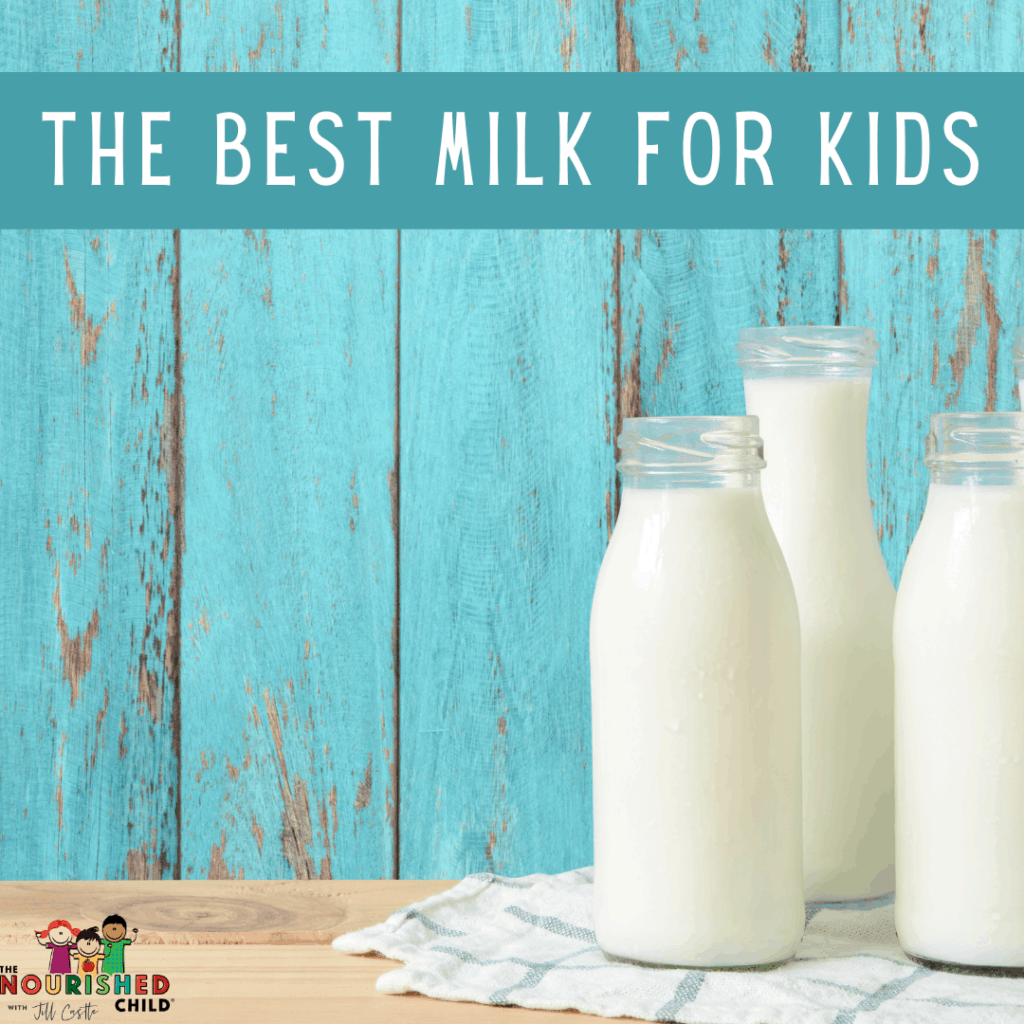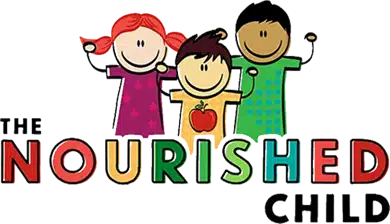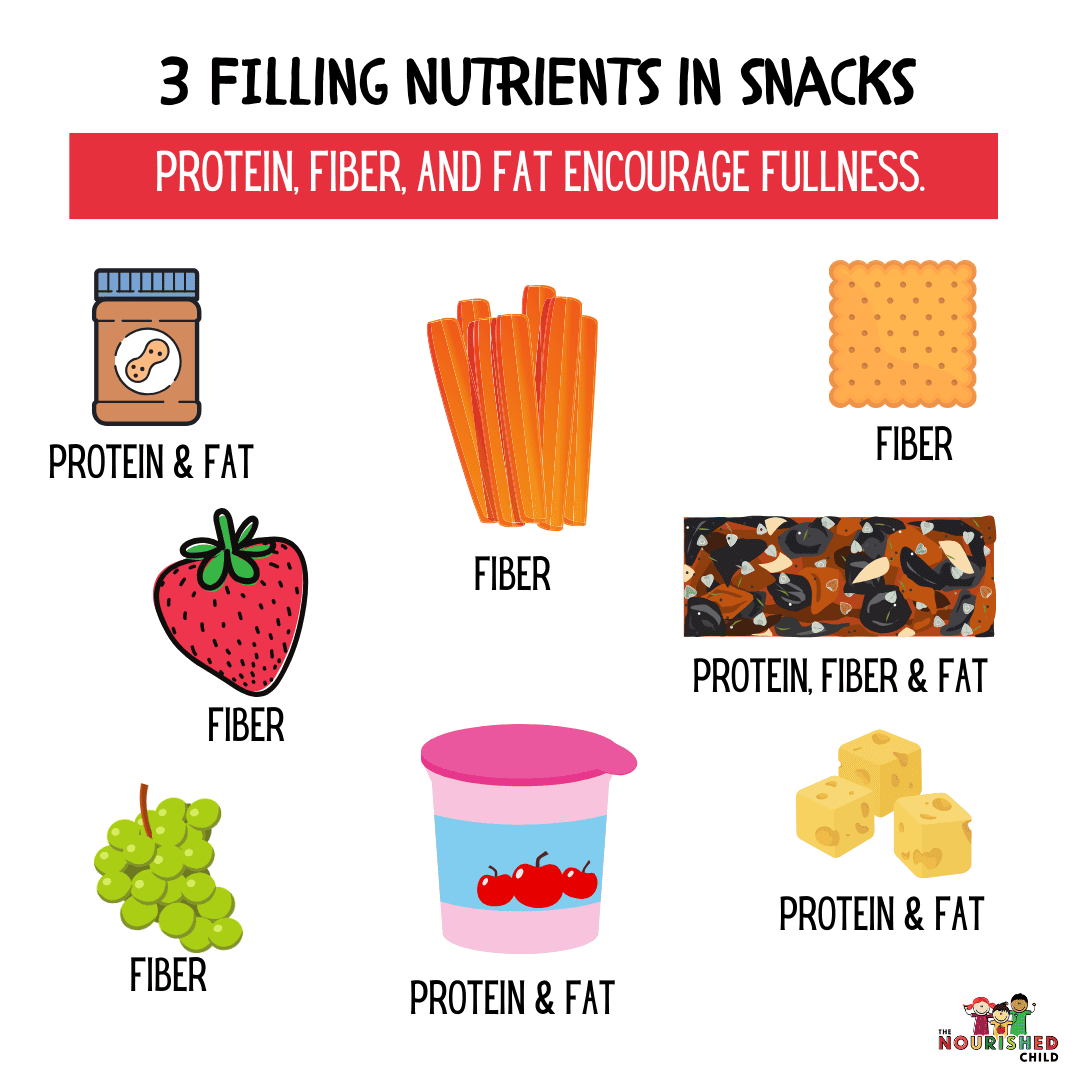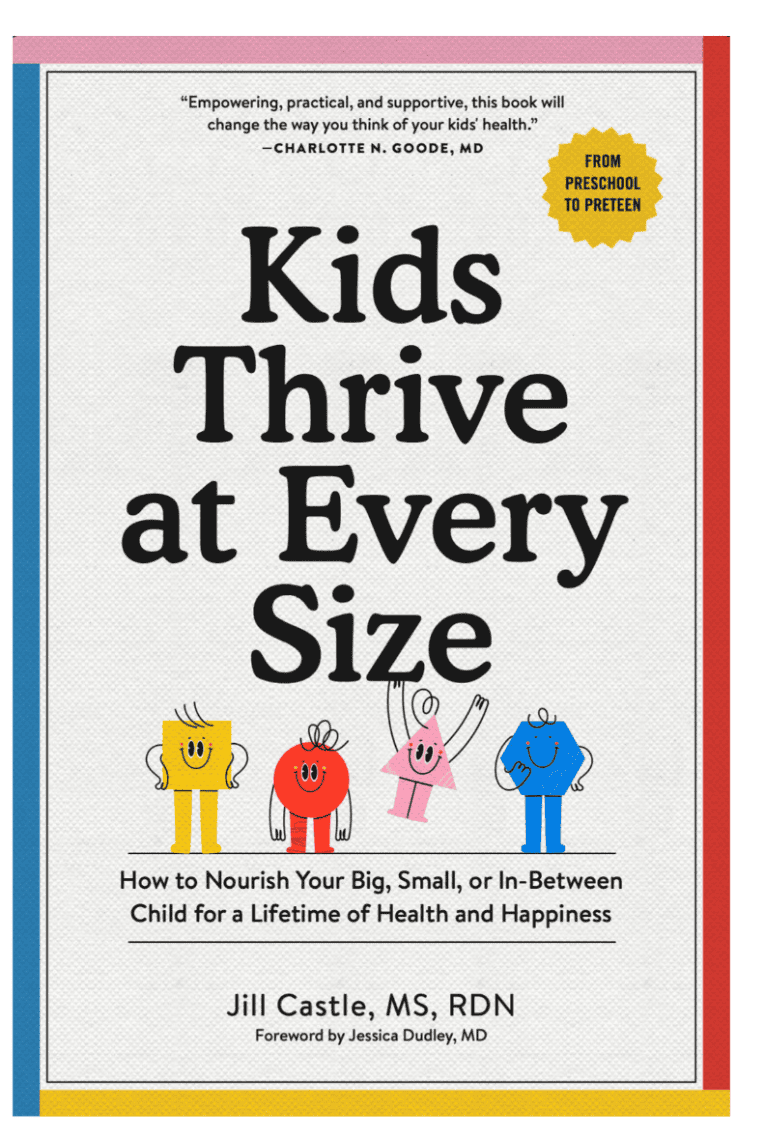Best Milk for Kids: What’s the Right Choice for Your Child?
August 15, 2024
Making a decision about the right milk to give your child isn’t always straightforward. Learn about cow’s milk, plant-based alternatives, and milk nutrition so you can make the right choice for your family.
The type of milk you choose for your child is an important decision.
A personal decision reflecting your culture, core beliefs, flavor preferences, and any medical conditions your child may have. While you want the best option for your child, you may not be sure which milk is the right choice.
Does your child have food allergies? In this case, cow’s milk, soy, or nut milks may not be an option.
Does your family follow a plant-based diet? There are many non-dairy milks on the market now and deciphering which one is best for your child isn’t easy.
The first step in the decision-making process is to understand what each of these options offer in terms of nutrition.
As a pediatric dietitian and mom of four, I know that nutrition comparisons are tedious and the information isn’t always easy to find. In this article, I’ll help you:
- Understand the variety of options, including plant-based milks and cow’s milk, and how they compare to your child’s nutritional needs
- See the breakdown of nutrition from each type of milk, from cow’s milk to cashew milk

What Your Child Drinks is an Important Nutrition Consideration
Selecting food and beverages with nutrients in mind helps you find the right balance in your child’s diet to meet their nutrient needs. When it comes to regular milk, approximately 65% of young children and 34% of teenagers do not get enough compared to what is recommended, according to the 2020 Dietary Guidelines for Americans.
Cow’s milk is a good source of protein, calcium, vitamin D and other nutrients. Even chocolate milk may be a rich source of nutrition for young people. One 8oz cup of low-fat cow’s milk contains 8g protein, 310 mg calcium and 80 IU of vitamin D.
Plant based milks, on the other hand, may be high in calcium, but they’re not considered part of the dairy group because they lack other important nutrients, like protein and vitamin D. Plant-based alternatives are not an even nutrient exchange when compared to cow’s milk.
Even if you choose cow’s milk, you still need to make sure your child gets calcium and vitamin D from other sources in the diet. Here’s a surprising fact: 3 cups of dairy won’t meet the requirement for vitamin D, or for calcium, in the older child and teen.
Age & Nutrient Needs for Growth and Development

If you select a milk alternative such as rice, almond, cashew, or coconut milk, you’ll need to pay more attention to offering other protein and fat sources in your child’s diet. It may surprise you to learn that some non dairy milk options contain low amounts of key nutrients.
The most important thing when choosing a milk or plant based milk for kids is that you make an informed decision. Decide on the drink that best contributes and complements your child’s nutrient intake from other foods. Don’t worry – I’m getting to those details!
[Watch What’s the Best Milk for Toddlers on YouTube!]
Best Milk for Toddlers
What toddlers drink provide a major source of nutrition throughout the day. The younger the child, the more dependent they will be on the milk you choose as a source of nutrition.
For example, young toddlers (aged 1-2 years) continue to have unique nutritional requirements, different from those of older children and adults. They have higher fat and nutrient needs related to their body size, and higher calories per pound of body weight for their growth.
Choosing beverages that are low in protein, fat or calories can negatively affect their health.
It’s recommended that young children under age 2 drink whole milk to meet their protein, fat and other nutrient needs.
Plant based milks (except for soy) are not recommended as an exclusive replacement for dairy in kids aged 1-5 years due to their lack of consistent nutrients, unless it’s medically necessary or culturally preferred, according to the consensus statement of the Healthy Beverage Consumption in Early Childhood.

Note: Children should not consume any milk or plant based drinks before they are 1 years old.
To learn more about toddler milk, listen to my interview with Dr. Jennifer Harris.

Milk versus Milk Alternatives
Personally, I am a big fan of traditional cow’s milk for taste and nutrient composition. And I’m a fan of chocolate milk, too. Yes, you can serve chocolate milk without feeling guilty by having a game plan and fitting it into the overall balance of your child’s diet. This usually means an occasional serving, or diluting commercially-available chocolate milk with regular, plain milk.
Your criteria for choosing cow’s milk or a substitute may be different.
From coconut milk to cashew milk, I’ve outlined a variety of plant-based milks, including the most popular and widely available sources to help you make an informed decision.
Many of the plant based milks below come in sweetened and unsweetened varieties so look for “unsweetened” to reduce your child’s intake of added sugars.
Cow’s Milk for Kids
The gold standard, cow’s milk, has been the fluid of choice for many years, and many generations, and it remains so in the eyes of the American Academy of Pediatrics (AAP). Cow’s milk, when included with a variety of foods, can support the growth and development of children.
The fat content of milk varies between whole milk, 2% milk, 1% milk and fat-free milk.
At one year of age, it’s recommended that babies transition to whole cow’s milk. At two years, the American Academy of Pediatrics (AAP) advocates a decrease in milk fat to 2% cow’s milk.
As your child ages, your pediatrician may advise 1% or fat-free milk depending on the family history of cardiovascular disease.
All varieties of cow’s milk are excellent sources of protein, calcium, and Vitamins A and D. If your child is lactose-intolerant, a lactose-free cow’s milk may be an ideal alternative.
[Helpful Read: How to Choose the Best Kids Yogurt]
Soy Milk for Kids
Milk alternatives with a good source of protein include soy milk as a top choice (and pea protein milk, aka Ripple Milk…read more below) . Soy milk is a good option for children who are intolerant or allergic to cow’s milk, or for those following a vegetarian diet.
It’s estimated that 40% of children who are allergic to milk are also allergic to soy. Soy milk closely matches the nutrient profile of cow’s milk, which is why MyPlate from USDA considers soy milk as an appropriate substitute for cow’s milk. Some soy versions provide higher levels of protein.
Soy milk is fortified with calcium and Vitamin D, and it provides adequate protein and calories for growing children over one year. Sugar may be added to soy milk to mask the naturally bitter taste.

Is Soy Milk Safe for Kids?
I get a lot of questions about the safety of soy products for young girls and boys. According to the American Institute for Cancer Research (AICR), moderate soy consumption (up to two servings per day* of whole soy foods) is safe.
(*One serving of soy averages about 7 grams of protein and 25 mg of isoflavones.) Scientists have found that soy doesn’t increase estrogen levels in humans, nor does it feminize men.
Rice Milk for Kids
Rice milk is another plant-based milk that may be used by children who are allergic to both cow and soy milks, or as a milk substitute for the vegetarian child.
Rice milk has very little protein, fat, and calories. Replacing soy or cow’s milk with rice milk requires thoughtful meal planning, especially for toddlers who need more of these nutrients. Rice milk is fortified with vitamin D and may contain added sugar.
Is Rice Milk a Healthy Option for Toddlers?
Some research has shown evidence of growth failure in young children consuming rice milk due to its poor protein, fat, calorie, and vitamin/mineral content. There’s also a concern about the amount of arsenic in rice products, including rice cereal, rice cakes and crackers, and rice milk.
If it’s necessary for your child to consume rice milk (i.e., due to a food allergy), consult with a Registered Dietitian (RD) or your pediatrician (MD) so they can provide guidance to make sure your child meets his overall nutrient needs and to minimize arsenic exposure.
Hemp Milk for Kids
Hemp milk is a vegan milk made from the cannabis plant. It contains omega-3 fatty acids and is also a source of iron, vitamin B12, magnesium, calcium and vitamin D.
Flavored hemp milk is similar in calorie content to whole cow’s milk and soy milk but carries a punch of added sugar (~14 gm/cup, or 3 1/2 teaspoons). The unflavored types are considerably lower in calories. Protein and fat content are lower than cow’s milk, but higher than other grain-based milks.
Nut Milks for Kids: Cashew Milk and Almond Milk
Another category of milk substitute are the nut milks such as almond and cashew milk. These also tend to be low in protein and fat. They should not be offered to children who have a nut allergy.
Helpful Article: The Big 9: Common Food Allergies in Kids
Almond milk has very little protein (~1 gm per cup) and is low in calories. But all is not lost! It has a decent amount of both vitamins E and B12 and may be fortified with calcium and vitamin D (check label).
Cashew milk has a similar nutrient profile to almond milk.
Coconut Milk for Kids
Coconut milk has little to no protein (depending on the brand) and it’s made from blending coconut water with the liquid extracted from grated coconut flesh. Its fat content is similar to whole cow’s milk, and it boasts some decent levels of vitamin B12. Dairy aisle coconut milk is low in calories.
Pea Protein Milk for Kids (Ripple Milk)
Pea protein milk is another milk substitute on the market. It’s made from yellow peas and boasts equal protein to cow’s milk. Nutritionally, it offers omega-3 fats, and a heftier dose of both calcium and vitamin D compared to cow’s milk. It’s my choice for children who cannot (or won’t) drink cow’s milk or soy milk.
Oat Milk for Kids
Oat milk has low to moderate amounts of protein per cup and is often fortified with calcium and vitamin D, among other nutrients. Calories can vary, depending on flavoring and the amount of added sugar. Check the nutrition label – there’s lots of variability here!
Flax Milk for Kids
As far as alternative milks go, flax milk is in the same boat with almond, cashew and coconut milks: virtually no protein content. It’s the lowest calorie plant milk in this list. However, it has a decent dose of heart healthy omega-3 fats.
FAQ About Drinking Milk
There are lots of little questions about milk and drinking milk in general. And lots of myths about cow’s milk!
Here’s my perspective on some of the most common questions I receive about milk for kids:
How Much Milk Should a Toddler Drink?
Toddlers should drink around 2 to 2 1/2 cups of milk each day.
How Much Milk Should You Drink in a Day if You’re a Teen?
Teenagers should drink about 3 cups of milk each day or consume the equivalent of 3 cups of dairy, such as a cup of yogurt, a cup of cottage cheese, or 1 1/2 ounces of cheese.
Does Milk Help You Grow?
Yes, milk, like other foods, helps children grow. Some milk has more nutrition, and offers a more efficient source of nutrition for growth and development.
Cow’s milk has more bioavailable nutrients – this means it’s easier for the body to absorb and use the nutrients found in milk. Plant-based alternatives to cow’s milk may have fewer key nutrients and/or the nutrients aren’t as easily available to the body due to the presence of phytates and oxalates which interfere with nutrient absorption.
If you are trying to decide whether to give your child cow’s milk or a plant based milk, consider your child’s age and nutrient needs for growth and development. If there are food allergies or other medical conditions that require a specific nutrient composition, pay closer attention to your options. Last, consider your family food practices and cultural traditions.
Is Milk Fattening?
Some of the latest research indicates that full fat dairy milk (whole milk) actually helps children feel fuller longer. This may reduce their susceptibility to gaining excess body fat.
Kiki Milk for Kids
Kiki milk is a blended plant-based milk designed for children and made from oats, hemp seeds, pumpkin seeds and coconuts.
It contains about 5 g of protein per 8 ounce serving, offers a decent amount of calcium and a small amount of fiber. Note, the fat source is mainly omega-3 fatty acids from plant seeds. It’s also dairy, soy and nut free.
Resources:

Jill Castle, MS, RD
I like empowering parents to help their children and teens thrive at every size with realistic advice centered on healthful habits around food, feeding, nutrition and health behaviors. As a pediatric dietitian and author, my goal is to share strategies and realistic advice to help you raise a healthy and happy child through my articles and podcast.




